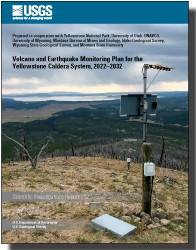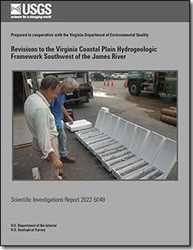Added VOLCANO HAZARDS PROGRAM, FOR 2022-2026 to cart. View cart.

Product Details
- Product Number
- 534173
- Series
- SIR-2022-5032
- Scale
- NO SCALE
- Alternate ID
- SIR2022-5032
- Authors
- IDAHO GEOLOGICAL SURVEY
- Version Date
- 01/01/2022
- Countries
- USA
- Media
- Paper
- Format
- Bound
Additional Details
- Description
-
Volcano and Earthquake Monitoring Plan for the Yellowstone Caldera System, 2022–2032
First posted June 21, 2022
For additional information, contact:
Director,
Yellowstone Volcano Observatory
https://www.usgs.gov/observatories/yvo
U.S. Geological Survey
345 Middlefield Road, MS 910
Menlo Park, CA 94025
Executive Summary
The Yellowstone Volcano Observatory (YVO) is a consortium of nine Federal, State, and academic agencies that: (1) provides timely monitoring and hazards assessment of volcanic, hydrothermal, and earthquake activity in and around Yellowstone National Park, and (2) conducts research to develop new approaches to volcano monitoring and better understand volcanic activity in the Yellowstone region and elsewhere. The U.S. Geological Survey (USGS) arm of YVO is also responsible for monitoring and reporting on volcanic activity in the Intermountain West of the United States.
The previous YVO monitoring plan for the Yellowstone region spanned 2006–2015 and focused on strengthening the region-wide coverage, or backbone, of monitoring systems (Yellowstone Volcano Observatory, 2006). The goals of that plan have largely been achieved thanks to significant investments in instrumentation and infrastructure, especially by the National Science Foundation EarthScope Plate Boundary Observatory (now known as the Network Of The Americas, or NOTA) and the American Reinvestment and Recovery Act. This revision of the monitoring plan, covering 2022–2032, builds upon these improvements to monitoring systems in the Yellowstone region while also accounting for new insights into the dynamics of the area’s seismic, volcanic, and hydrothermal activity. These additional improvements are designed to fill gaps in the monitoring network and to better understand and track hazards associated with hydrothermal processes. These improvements include:
Conversion of remaining analog seismic stations to digital,
Addition of Global Positioning System (GPS) stations in the vicinity of Norris Geyser Basin and other areas where changes in deformation rate and style have been observed,
Implementation of continuous gas monitoring in several areas of Yellowstone National Park, and
Improvements to lake, meteorological, and hydrological monitoring to better track hydrothermal activity, including that occurring on lake bottoms, and to aid in understanding of whether such activity might be influenced by external forces, like environmental conditions.
The 2022–2032 monitoring plan for the Yellowstone volcanic system also proposes to improve monitoring of hydrothermal areas to better understand these dynamic systems and their associated hazards. To date, only a single seismometer has been placed within one of Yellowstone National Park’s geyser basins because seismic noise associated with boiling water can hinder interpretation of overall seismic and magmatic activity, but this concern has been mitigated by improvements to backbone monitoring. Deployment of geophysical, geochemical, hydrological, and geological monitoring instruments in geyser basins will be accompanied by campaigns to measure gas and water chemistry and flux, as well as aerial and satellite surveys of gas and thermal emissions.
Close collaboration between YVO member institutions and other research agencies is needed to achieve these monitoring goals and to use the derived data to advance understanding of how Yellowstone Caldera and similar volcanic systems work. At the same time, attention must be paid to minimize the impact of monitoring efforts and infrastructure on the environment. YVO thus commits to serving as stewards of the natural, cultural, and historical resources in and around Yellowstone National Park while maximizing scientific gain for the betterment of society.
- Survey Date
- 2022
- Print Date
- 2022
- Height In Inches
- 11.000
- Length In Inches
- 8.500
- Two Sided
- Yes
- Pieces
- 1
- Languages
- English





